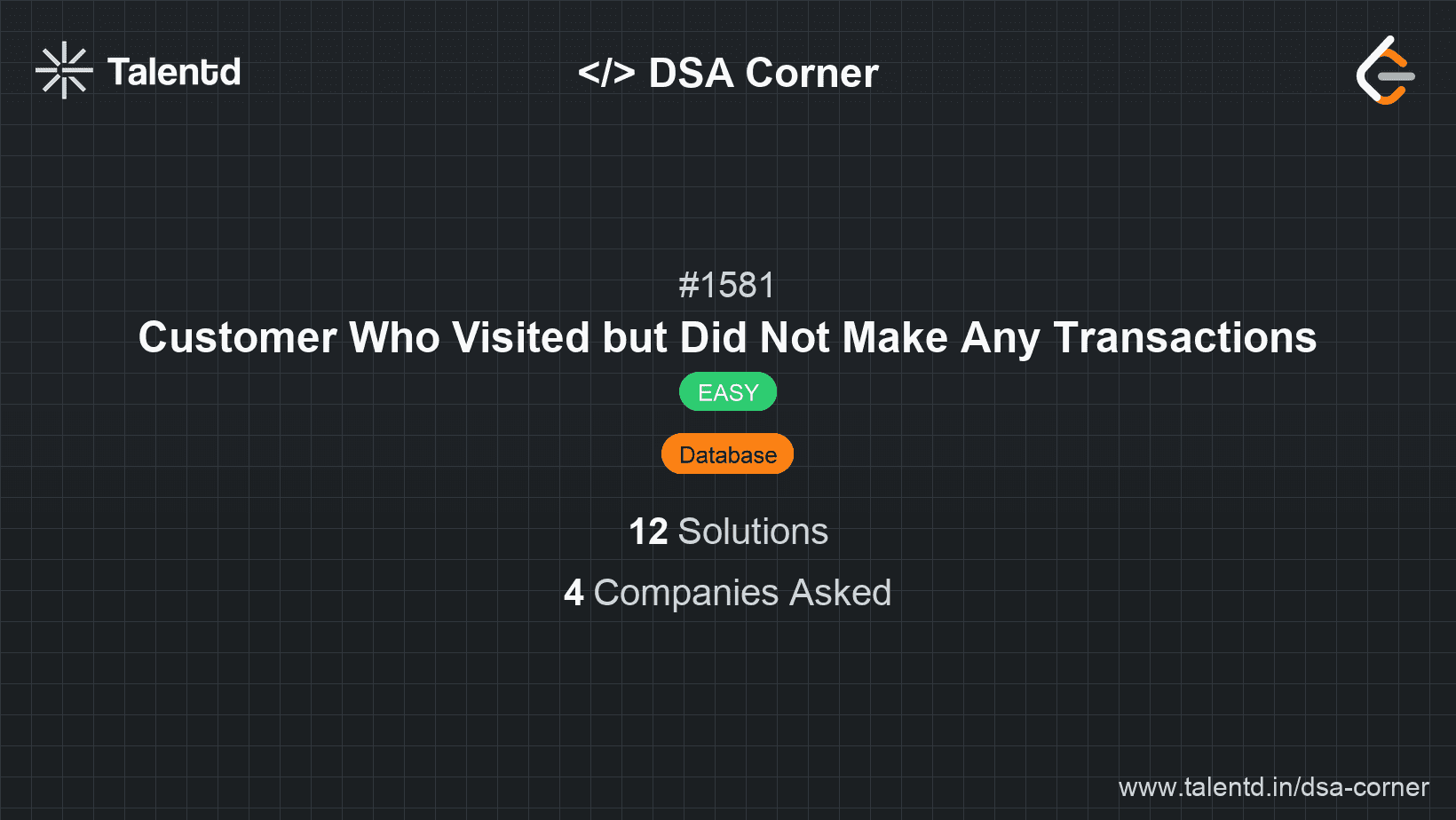
Sponsored
Sponsored
This approach utilizes SQL LEFT JOIN to find all visits that do not have corresponding transactions and GROUP BY to count the occurrences.
Time Complexity: O(N + M), where N is the number of rows in the Visits table and M is the number of rows in the Transactions table.
Space Complexity: O(K), where K is the number of unique customer_id entries in the result set.
1// C does not directly handle SQL queries, but you can use a library like SQLite3 in C to execute the SQL queries.Since C is a lower-level language and does not natively support SQL operations, using a library like SQLite3 allows you to perform database operations. Correct database connections and execution functions are required to run the query. The SQL query will filter and group data appropriately within the database.
This approach uses a subquery with NOT EXISTS to find all visits by customers that do not appear in the Transactions table.
Time Complexity: O(N * M), where N is the number of rows in the Visits table and M is the number of rows in the Transactions table.
Space Complexity: O(K), where K is the number of unique customer_id entries in the result set.
1For low-level languages like C, a library such as SQLite3 offers the capability to execute SQL queries. By utilizing subqueries and the NOT EXISTS clause, it's possible to efficiently filter based on the absence of transactions.